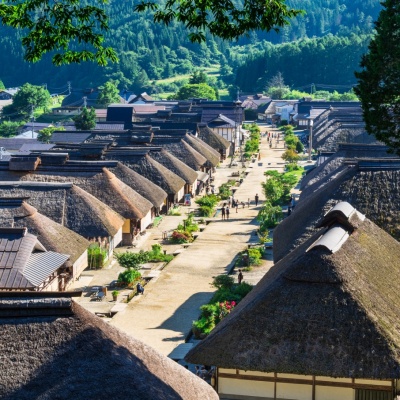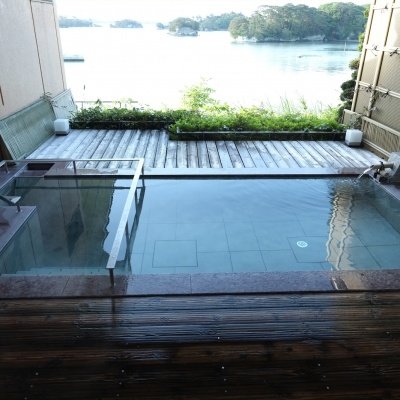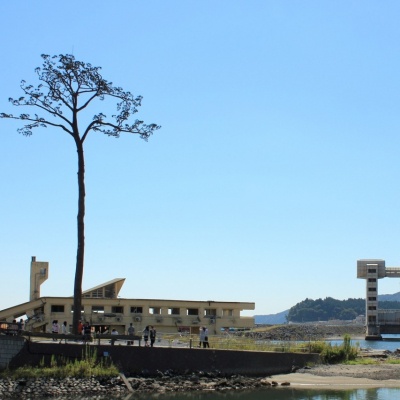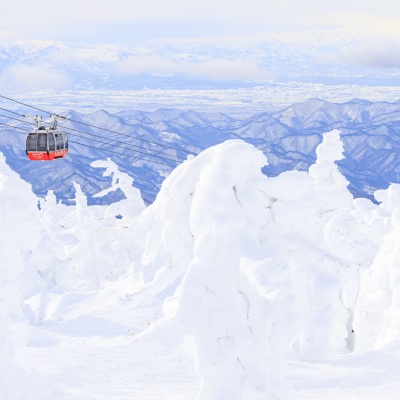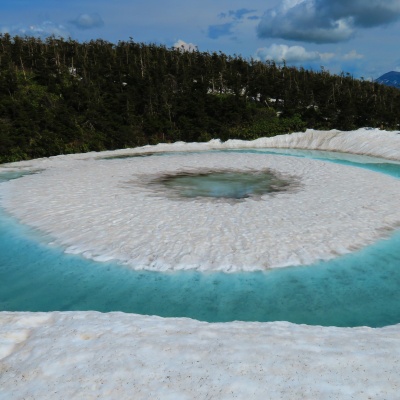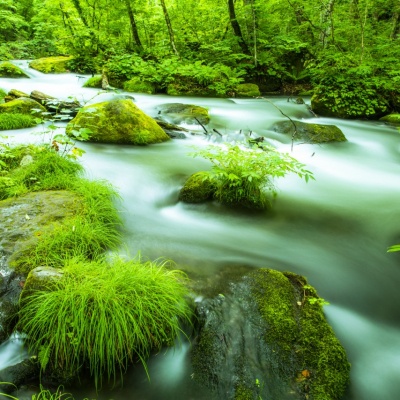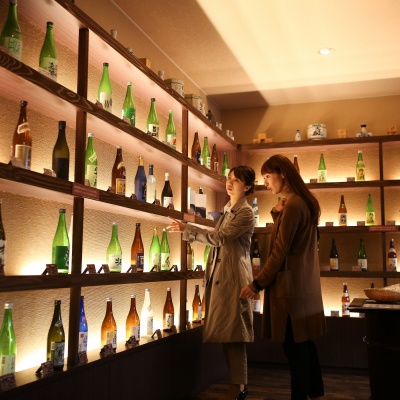3 days/2 nights based in Higashiyama and Ashinomaki Onsen [Base! Tohoku]
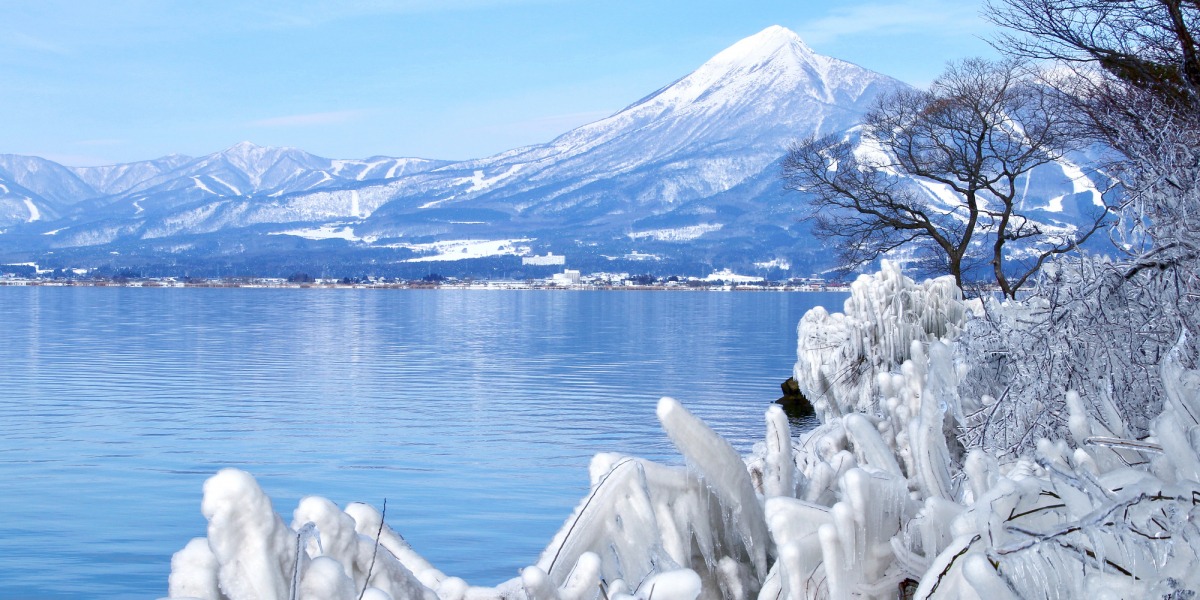
Aizu Wakamatsu, known as the "Samurai City," is nearby, a 10-minute drive to Higashiyama Onsen and a 25-minute drive to Ashinomaki Onsen.
Visit historical sites such as castles and samurai residences.
Famous sightseeing spots such as "Lake Inawashiro" and "Ouchi-juku" are also within a day trip.
START
Day1
Lake Inawashiro
A lake fascinating visitors with its seasonal beauty
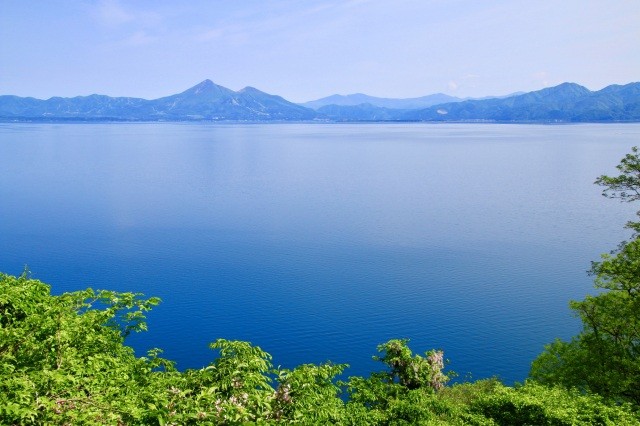
The 100km2 Lake Inawashiro is one of the largest lakes in Japan. The lake is so big that you may feel as if you were standing by the sea. The crystal clear water gives rise to the colloquial name of “Tenkyo-ko”, the lake of heaven’s reflection.
The lake attracts visitors all year round with its seasonal charms. A spring walk along the lake offers a magnificent view of Mount Bandai framed in cherry blossoms. Summer attractions at the lake include camping, swimming and a wide range of water sports. The surrounding autumnal leaves reflect picturesquely on the water while a flock of migratory swans lives here during winter.
The most popular winter attraction is known as “Shibuki Gori”, a unique phenomenon caused by the lake water being splashed by strong winds and immediately freezing on the surrounding trees. Many people come to see the unique decorations of this icy spray.
Among the many scenic locations around the lake, our recommendation is the view looking down the lake from the Showa-no-Mori Observatory. Pleasure boat rides are available throughout the year.
Other attractions in the neighbourhood include farms, hot springs, boutique cafes and ski resorts. The lake and its surrounding area are capable of providing both relaxing and active holidays!
The lake attracts visitors all year round with its seasonal charms. A spring walk along the lake offers a magnificent view of Mount Bandai framed in cherry blossoms. Summer attractions at the lake include camping, swimming and a wide range of water sports. The surrounding autumnal leaves reflect picturesquely on the water while a flock of migratory swans lives here during winter.
The most popular winter attraction is known as “Shibuki Gori”, a unique phenomenon caused by the lake water being splashed by strong winds and immediately freezing on the surrounding trees. Many people come to see the unique decorations of this icy spray.
Among the many scenic locations around the lake, our recommendation is the view looking down the lake from the Showa-no-Mori Observatory. Pleasure boat rides are available throughout the year.
Other attractions in the neighbourhood include farms, hot springs, boutique cafes and ski resorts. The lake and its surrounding area are capable of providing both relaxing and active holidays!
Ouchi-juku
Feel the spirit of the old townspeople of this historic town
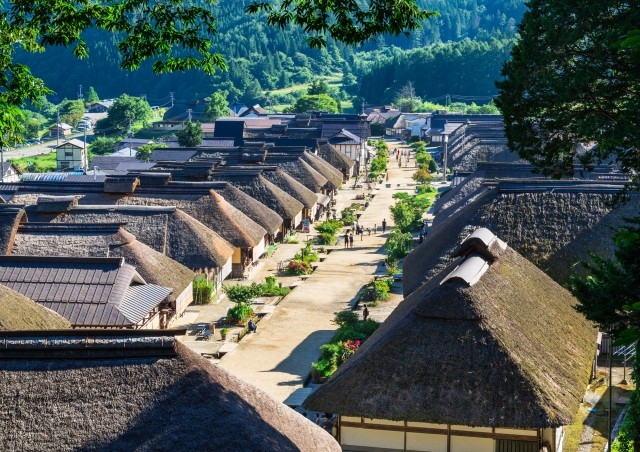
Ouchi-juku is a former post town established around the 17th century and also registered as an Important Preservation District for Groups of Historic Buildings by the Japanese government. The streets lined with thatch-roofed houses are reminiscent of the Edo period (1603-1867), and displays showing the details of life in those times down to the utensils and hearths help visitors imagine what life was like during its heyday.
Continue down the main street where you will reach the Ichi-no-Torii (first gate), of Takakura Shrine, the village's Shinto shrine. Passing through the torii gate, you will find yourself in a quiet walking area. Climb the steps up to the shrine to find a spot with a spectacular view overlooking Ouchi-juku.
There are many souvenir stores and delicious food to eat. Not to be missed is negi soba (leek buckwheat noodles), a local delicacy eaten using sticks of leek as chopsticks. It is not only delicious but also worth a picture! Other attractive foods include tochimochi, a rice cake made by combining horse chestnut and glutinous rice, and shingoro, which looks like a dumpling and is flavored with juunen (perilla) miso.
The area is also close to To no Hetsuri, a scenic gorge designated as a National Natural Monument, making Ouchi-juku a place worth visiting.
Continue down the main street where you will reach the Ichi-no-Torii (first gate), of Takakura Shrine, the village's Shinto shrine. Passing through the torii gate, you will find yourself in a quiet walking area. Climb the steps up to the shrine to find a spot with a spectacular view overlooking Ouchi-juku.
There are many souvenir stores and delicious food to eat. Not to be missed is negi soba (leek buckwheat noodles), a local delicacy eaten using sticks of leek as chopsticks. It is not only delicious but also worth a picture! Other attractive foods include tochimochi, a rice cake made by combining horse chestnut and glutinous rice, and shingoro, which looks like a dumpling and is flavored with juunen (perilla) miso.
The area is also close to To no Hetsuri, a scenic gorge designated as a National Natural Monument, making Ouchi-juku a place worth visiting.
Ashinomaki Onsen
The inner parlor of Aizu: Relax in the hot spring that you can get to!
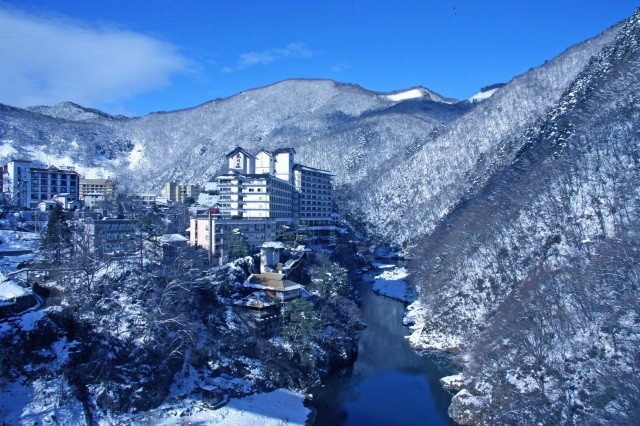
Ashinomaki Onsen is proud of its beautiful valley and natural hot spring with abundant hot water. The hot spring was opened 1,200 years ago. It was difficult to reach at that time, so it was also called a ""phantom hot spring village."" The sheer precipice of the deep valley is scattered with hot spring ryokan inns and a secluded hot spring mood hangs in the air. Why don't you forget about the hustle and bustle of everyday life and spend a relaxing moment in an inn with a superb view that allows you to fully take in the beautiful valley and the greenery of the forest while soaking in hot water?
The highlights here include Ashinomaki Onsen Station that is famous for having a cat serving as the station master, the Ichii Trail (Japanese Yew Trees) Walkway that is symbolized by yew trees and the Ashi Poppo footbath with hot water flowing in directly from the source located in a place with a great view.
This is a quiet hot spring area. Nevertheless, you will find the Ouchi-juku post station, To-no-Hetsuri cliff formation, Tsuruga Castle, Aizu Samurai Residences and other tourist attractions nearby. There is also great access from Aizu-Wakamatsu; it is approximately 25 minutes by car. This makes it perfect as a base for sightseeing in Aizu-Wakamatsu.
A thematic journey in the Tohoku region:Hot springs
The highlights here include Ashinomaki Onsen Station that is famous for having a cat serving as the station master, the Ichii Trail (Japanese Yew Trees) Walkway that is symbolized by yew trees and the Ashi Poppo footbath with hot water flowing in directly from the source located in a place with a great view.
This is a quiet hot spring area. Nevertheless, you will find the Ouchi-juku post station, To-no-Hetsuri cliff formation, Tsuruga Castle, Aizu Samurai Residences and other tourist attractions nearby. There is also great access from Aizu-Wakamatsu; it is approximately 25 minutes by car. This makes it perfect as a base for sightseeing in Aizu-Wakamatsu.
A thematic journey in the Tohoku region:Hot springs
Day2
Tsurugajo Castle
Japan’s only castle with elegant red tiled roofs
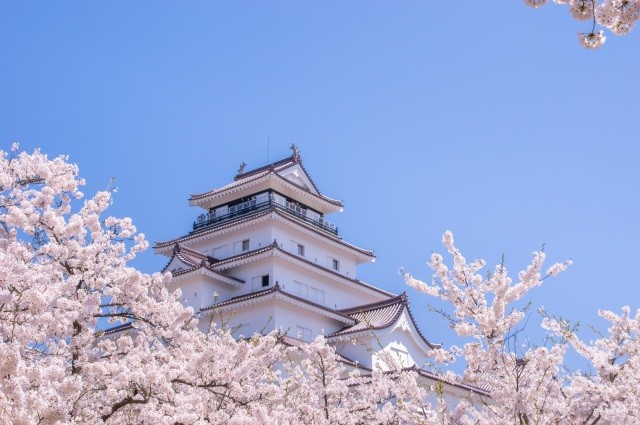
Tsuruga Castle, also known as Aizu Castle or Aizuwakamatsu Castle, is famed as an impregnable fortress that withstood a month-long siege by the newly formed government during the Boshin war in 1868.
The castle has undergone additional repairs since being reconstructed in 1965. Reroofing work was completed in 2011 to reproduce the look of the 17th century castle. Selected as one of Japan’s most famous 100 castles, it is the only existing castle with red tiled roofs in Japan. The stone walls of the castle tower survived the devastating 1611 earthquake and today stand in their original form.
The castle keep is now open as a museum and visitors can enjoy a panoramic view of the city of Aizuwakamatsu from the top floor. After exploring the castle, the tearoom “Rinkaku” in the Tsuruga Castle Park, built by the tea master Sen no Rikyu’s son-in-law, is the perfect place to enjoy a cup of tea in the castle’s traditional garden.
Tsuruga Castle Park is famous for its thousand cherry blossom trees illuminated at night. The surrounding trees are also illuminated in autumn to show off the vividly changing colours of their leaves. Meanwhile the castle fills with visitors during the “Aizue Candle Festival” each winter. The view of the snow-covered castle illuminated by traditional hand-decorated candles is unforgettable!
A thematic journey in the Tohoku region:Castles・Samurai
The castle has undergone additional repairs since being reconstructed in 1965. Reroofing work was completed in 2011 to reproduce the look of the 17th century castle. Selected as one of Japan’s most famous 100 castles, it is the only existing castle with red tiled roofs in Japan. The stone walls of the castle tower survived the devastating 1611 earthquake and today stand in their original form.
The castle keep is now open as a museum and visitors can enjoy a panoramic view of the city of Aizuwakamatsu from the top floor. After exploring the castle, the tearoom “Rinkaku” in the Tsuruga Castle Park, built by the tea master Sen no Rikyu’s son-in-law, is the perfect place to enjoy a cup of tea in the castle’s traditional garden.
Tsuruga Castle Park is famous for its thousand cherry blossom trees illuminated at night. The surrounding trees are also illuminated in autumn to show off the vividly changing colours of their leaves. Meanwhile the castle fills with visitors during the “Aizue Candle Festival” each winter. The view of the snow-covered castle illuminated by traditional hand-decorated candles is unforgettable!
A thematic journey in the Tohoku region:Castles・Samurai
Sazaedo
Experience the wonderland of this double-helix wooden structure – the only one of its kind!
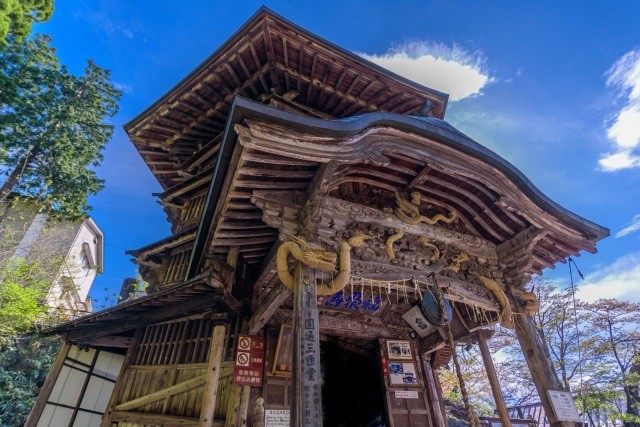
Sazae-do is a three-storied, hexagonal pagoda with the look of an optical illusion. Officially called “Entsu Sansodo”, the temple is known by the nickname “Sazae-do” as its shape resembles a turban shell. The double-helix wooden structure is the only one of its kind in the world and has been designated an Important Cultural Property.
Go inside and walk up the winding slope while observing the curved windows. Thanks to its one-way path you never have to pass anyone on your way up or down. Rumours abound about the construction of this unique structure. According to one Sazae-do was based on the design of Leonard da Vinci’s Chateau de Chambord. Another says the temple’s head priest was inspired by a revelation from heaven. Experience the wonder of the one-way spiral path within this strangely distorted interior space!
Sazae-do was once part of a pilgrimage trail with 33 Kannon statues lining the slope up to the structure. Pilgrims came here as an alternative to the Saigoku Kannon Pilgrimage and today the ceiling of Sazae-do is still covered with stickers from people who accomplished the pilgrimage here.
The building is part of a shrine complex at the base of Mount Iimori. The “Uga Shindo”, 19 statues worshipping the famous Byakkotai (a group of young samurai), is located nearby.
Go inside and walk up the winding slope while observing the curved windows. Thanks to its one-way path you never have to pass anyone on your way up or down. Rumours abound about the construction of this unique structure. According to one Sazae-do was based on the design of Leonard da Vinci’s Chateau de Chambord. Another says the temple’s head priest was inspired by a revelation from heaven. Experience the wonder of the one-way spiral path within this strangely distorted interior space!
Sazae-do was once part of a pilgrimage trail with 33 Kannon statues lining the slope up to the structure. Pilgrims came here as an alternative to the Saigoku Kannon Pilgrimage and today the ceiling of Sazae-do is still covered with stickers from people who accomplished the pilgrimage here.
The building is part of a shrine complex at the base of Mount Iimori. The “Uga Shindo”, 19 statues worshipping the famous Byakkotai (a group of young samurai), is located nearby.
Mount Iimori
Reflect on the tragedy of these young worriers
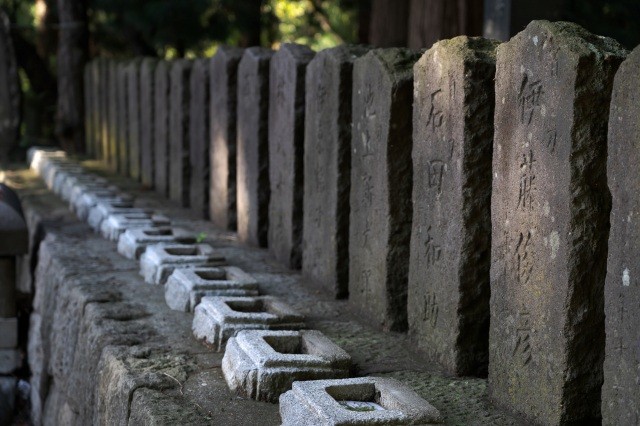
Located 314 metres above sea level, Mount Iimori overlooks the former castle town of Aizuwakamatsu. You can reach the top of the mountain via a path of 183 steps or taking the convenient travelator.
The graves of the 19 members of Byakkotai (“White Tiger Force”) at Mount Iimori commemorate the tragedy of the Aizu War, a local battle of the Boshin War in 1868. The Byakkotai was made up of teenage warriors who fought for the local Aizu feudal domain. When they saw Tsuruga Castle surrounded by clouds of smoke they believed the castle was in flames and committed suicide for their master. Nowadays many people still come to memorial services for these young warriors. Visitors can see the castle exactly as it was when the Byakkotai observed it from this tragic spot. The grave of the sole surviving member is located nearby.
There are monuments from Italy and Germany honouring the Byakkotai for their loyalty. Visitors can also see the canal cave through which the Byakkotai retreated from the battlefield of Tonoguchihara.
The Byakkotai Memorial Museum, the Byakkotai Museum of History and an Important Cultural Property, Takizawa Honjin are in the neighbourhood. Mount Iimori is also home to the Important Cultural Property of Sazae-do which attracts many visitors throughout the year.
Located on the mountainside, Iimori Bunten is a convenient place to take a break and have lunch while enjoying wonderful views of the city of Aizuwakamatsu.
The graves of the 19 members of Byakkotai (“White Tiger Force”) at Mount Iimori commemorate the tragedy of the Aizu War, a local battle of the Boshin War in 1868. The Byakkotai was made up of teenage warriors who fought for the local Aizu feudal domain. When they saw Tsuruga Castle surrounded by clouds of smoke they believed the castle was in flames and committed suicide for their master. Nowadays many people still come to memorial services for these young warriors. Visitors can see the castle exactly as it was when the Byakkotai observed it from this tragic spot. The grave of the sole surviving member is located nearby.
There are monuments from Italy and Germany honouring the Byakkotai for their loyalty. Visitors can also see the canal cave through which the Byakkotai retreated from the battlefield of Tonoguchihara.
The Byakkotai Memorial Museum, the Byakkotai Museum of History and an Important Cultural Property, Takizawa Honjin are in the neighbourhood. Mount Iimori is also home to the Important Cultural Property of Sazae-do which attracts many visitors throughout the year.
Located on the mountainside, Iimori Bunten is a convenient place to take a break and have lunch while enjoying wonderful views of the city of Aizuwakamatsu.
Aizu Bukeyashiki (Samurai Residence)
Discover Aizu’s history and culture at this museum complex
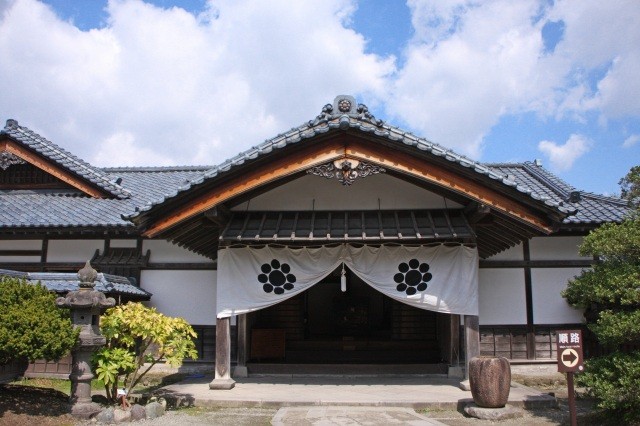
Aizu Bukeyashiki is a historical site of reconstructed samurai residences of the Edo period. The preserved buildings include the residences of the former chief councillor Tanomo Saigo, a magistrate’s office and a replica of the tearoom “Rinkaku” of Tsuruga Castle.
Visitors can learn about the samurai’s lifestyle and the Boshin war at the museum on site. The residence of Tanoma Saigo is open to public from mid-December to early April.
A variety of Aizu’s traditional cultural experiences are available for visitors to enjoy including painting the local lucky charms “Akabeko” (red cattle), glass engraving, and having your picture taken dressed as a villager of the Edo period.
There is a restaurant serving regional dishes on site along with a shop offering a wide range of traditional handicrafts and local produce, a great place to find some souvenirs to take home!
Visitors can learn about the samurai’s lifestyle and the Boshin war at the museum on site. The residence of Tanoma Saigo is open to public from mid-December to early April.
A variety of Aizu’s traditional cultural experiences are available for visitors to enjoy including painting the local lucky charms “Akabeko” (red cattle), glass engraving, and having your picture taken dressed as a villager of the Edo period.
There is a restaurant serving regional dishes on site along with a shop offering a wide range of traditional handicrafts and local produce, a great place to find some souvenirs to take home!
Higashiyama Onsen
Soak in natural surroundings on the outskirts of the samurai city of Aizuwakamatsu
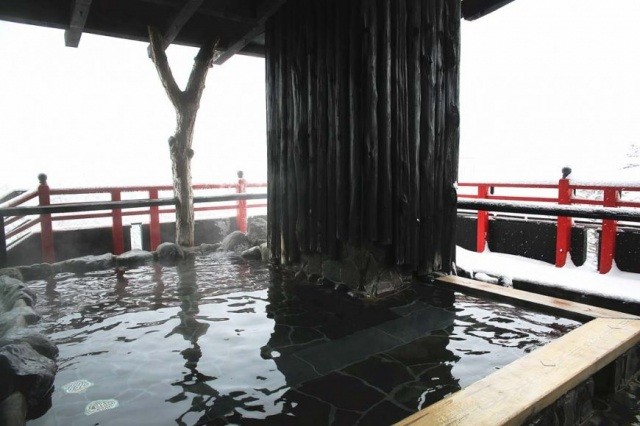
Higashiyama Onsen is one of three renowned hot springs in Tohoku along with Kaminoyama Onsen and Yunohama Onsen in Yamagata. A 10-minute drive from the centre of Aizuwakamatsu, Higashiyama Onsen is situated amid a rich natural scenery of spring cherry blossoms, lush summer greenery, autumn leaves and snowy winter scenes. This Onsen town stirs nostalgic feelings thanks to its row of traditional inns along the river, a traditional shooting range and small waterfall.
Founded by the prominent Buddhist priest Gyoki in the eighth century, Higashiyama Onsen’s sulphate-infused spring water is smooth on the skin and is said to be beneficial for rheumatism, high blood pressure and skin diseases. The high-temperature hot water keeps you warm on the inside. The Onsen was beloved by writers and artists including Akiko Yosano and Yumeji Takehisa. During the Boshin War in 1868, Toshizo Hijikata, a member of the Shinsengumi came here to heal his wounds.
Close to popular attractions such as Tsuruga Castle and Aizu Bukeyashiki, Higashiyama Onsen is a perfect location to start your journey around the samurai city of Aizuwakamatsu.
A thematic journey in the Tohoku region:Hot springs
Founded by the prominent Buddhist priest Gyoki in the eighth century, Higashiyama Onsen’s sulphate-infused spring water is smooth on the skin and is said to be beneficial for rheumatism, high blood pressure and skin diseases. The high-temperature hot water keeps you warm on the inside. The Onsen was beloved by writers and artists including Akiko Yosano and Yumeji Takehisa. During the Boshin War in 1868, Toshizo Hijikata, a member of the Shinsengumi came here to heal his wounds.
Close to popular attractions such as Tsuruga Castle and Aizu Bukeyashiki, Higashiyama Onsen is a perfect location to start your journey around the samurai city of Aizuwakamatsu.
A thematic journey in the Tohoku region:Hot springs
Day3
Kitakata Sake Brewery Exploring Londer Walk
Authentic and exquisite walk rally to visit 12 breweries on foot
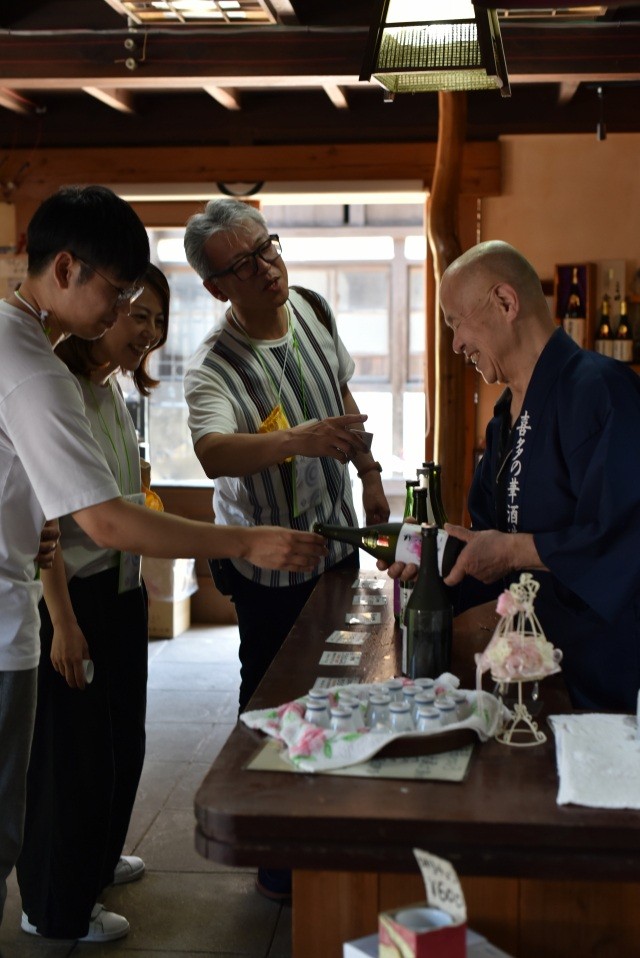
This is a genuine and exquisite walk rally where you can visit sake breweries with an original sake cup in hand and listen to the brewer's explanation while tasting sake and touring the brewery. This is a project that allows strangers to enjoy traditional techniques and fine sake while strolling through Kitakata in its fresh green foliage. Of course, you can finish your meal with Kitakata ramen!
GOAL
